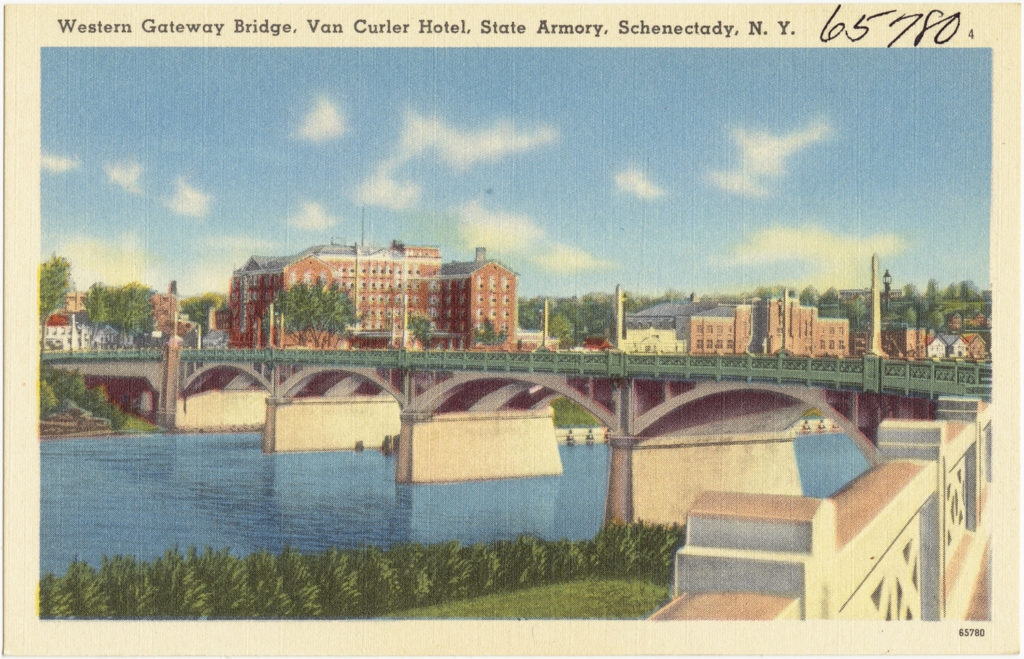
As Schenectady grew into an industrial powerhouse and State Street grew into a thriving commercial district, and as automobiles began to become an important form of transportation, it became clear that the old bridge across the Mohawk, an iron trestle affair that carried trolleys across between Washington Avenue and the end of the dike (Schonowe Avenue in Scotia), was no longer going to cut it. And so plans began to build a grand new replacement, christened “The Great Western Gateway Bridge.” There was a state commission, there were hearings, there were reports. And when it was all being tied up into a nice neat bow, there was some speechifying.
The Great Western Gateway Commission held a hearing at the Schenectady High School on Dec. 1, 1915, gathering support for any of the five or six options that were then before the Commission. Dr. Richmond of Union College said there were only two worthy of serious consideration: one from the end of Union Street to the Sanders Residence (you know it as the Glen-Sanders Mansion, which at the time was not completely obscured by a massive banquet facility), and the other from the end of State Street to Mohawk Avenue. (That second route seems like a straight shot to us now, but it really wasn’t until the current bridge was built around 1974, when the Mohawk Avenue approach was realigned, the Binnekill filled in and the inconvenient westward bend of State Street considerably softened by a much less perceptible curve in the bridge ramp.)
“I think you will find very cogent arguments for the route from the foot of State street to the foot of Mohawk avenue, Scotia. That is the only adequate answer to this demand. Farsighted managers of railways and subways, layers out of the great highways, are willing to go to almost any expense to take out the curves. We must remember that a bridge is not like a summer bonnet . . . which is as a flower of the field, which today is and tomorrow is cast away. Any bridge which we build in these enlightened times should stand at least two or three hundred years . . . Huge indeed has been the waste in this State and in all of our cities because we had constantly to undo the mistakes of the past and do them over again.”
Sadly, anyone who remembers the beautiful, graceful Western Gateway Bridge that was built after this hearing most likely knows two things about it. First, they didn’t take out the curve. Far from it; it had a spectacular curve that cars sailed off of with alarming regularity, so that in latter days the concrete wall was held up with steel cables and still cars challenged it. Second, it didn’t last two or three hundred years. In fact, it didn’t quite make 50.
Oh, there will be more speechifying in the days to come.
